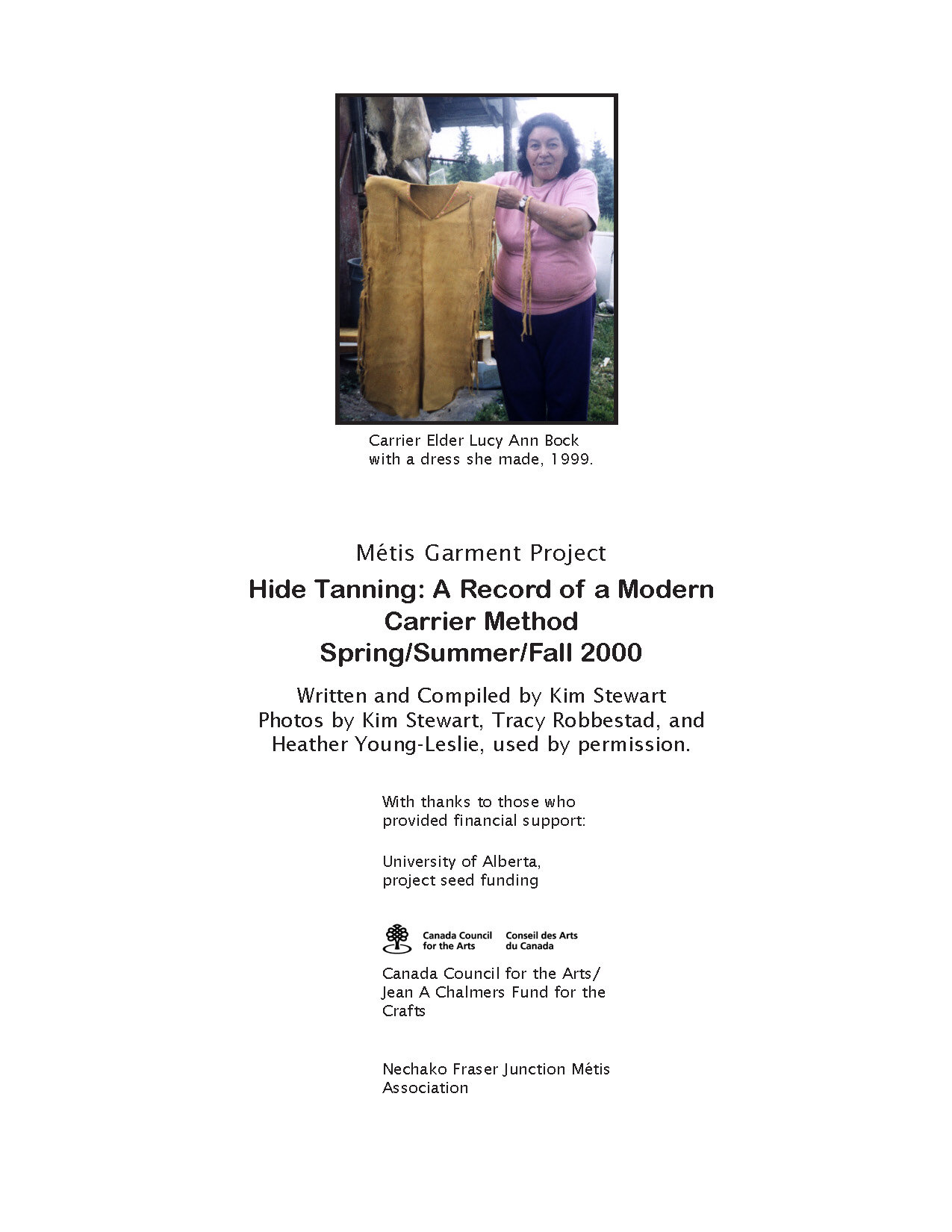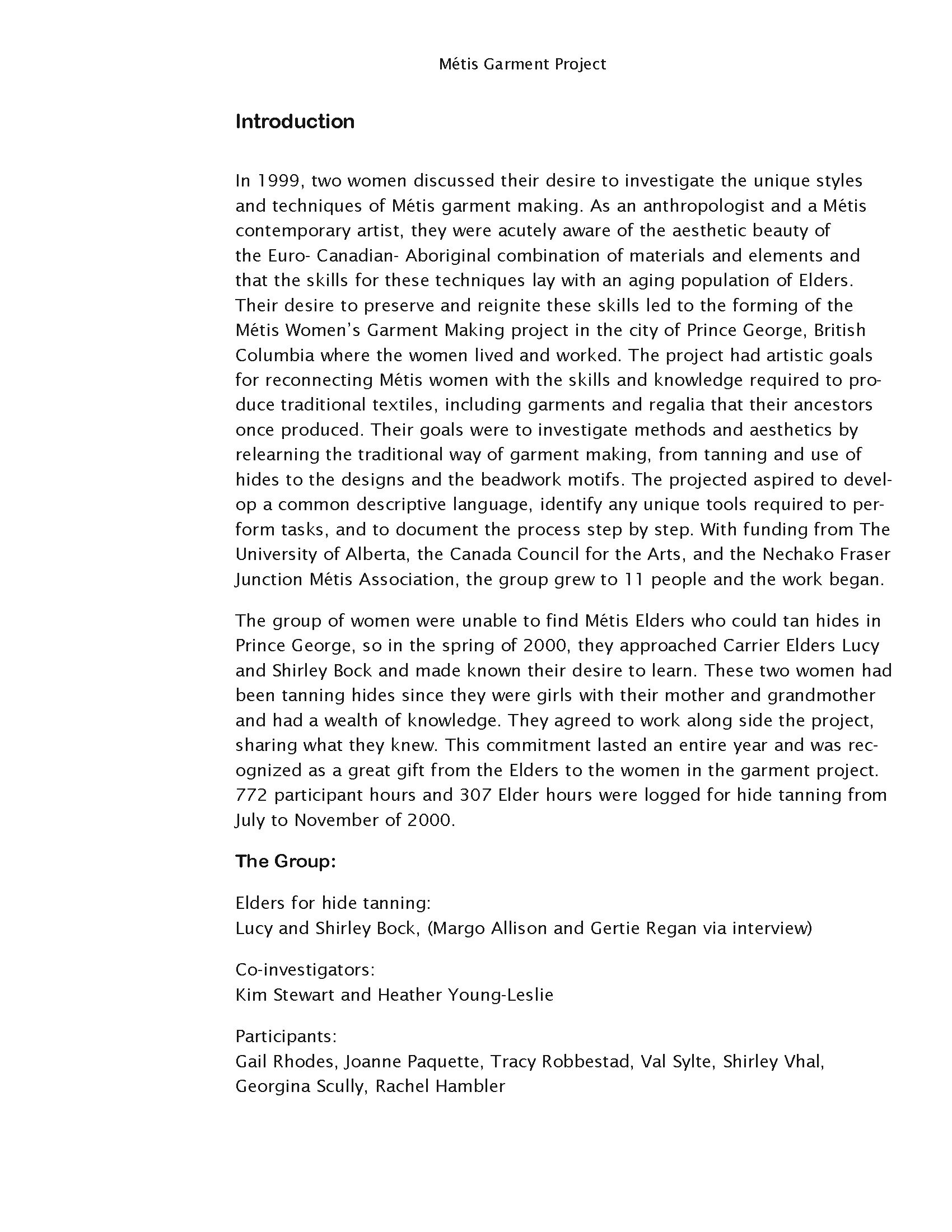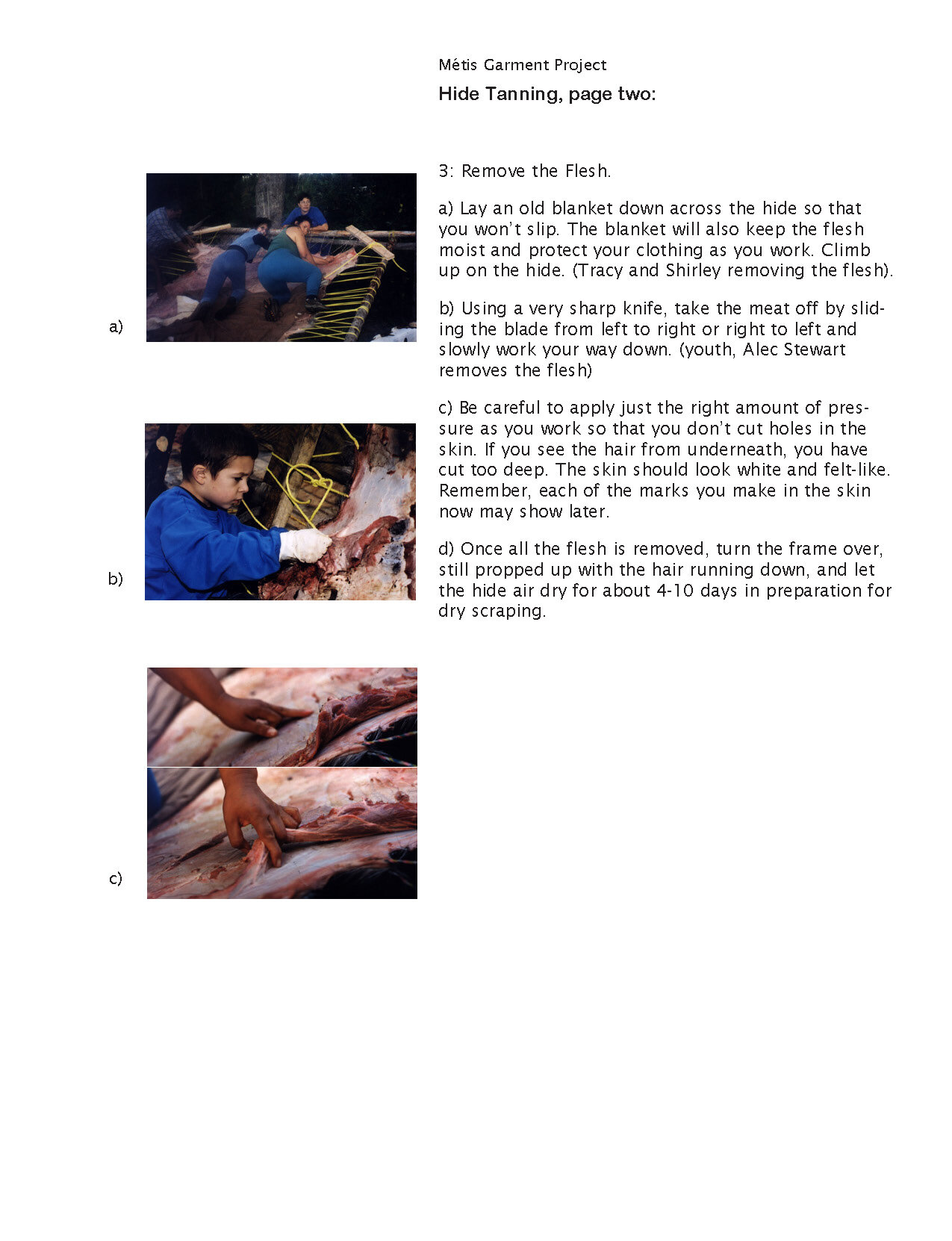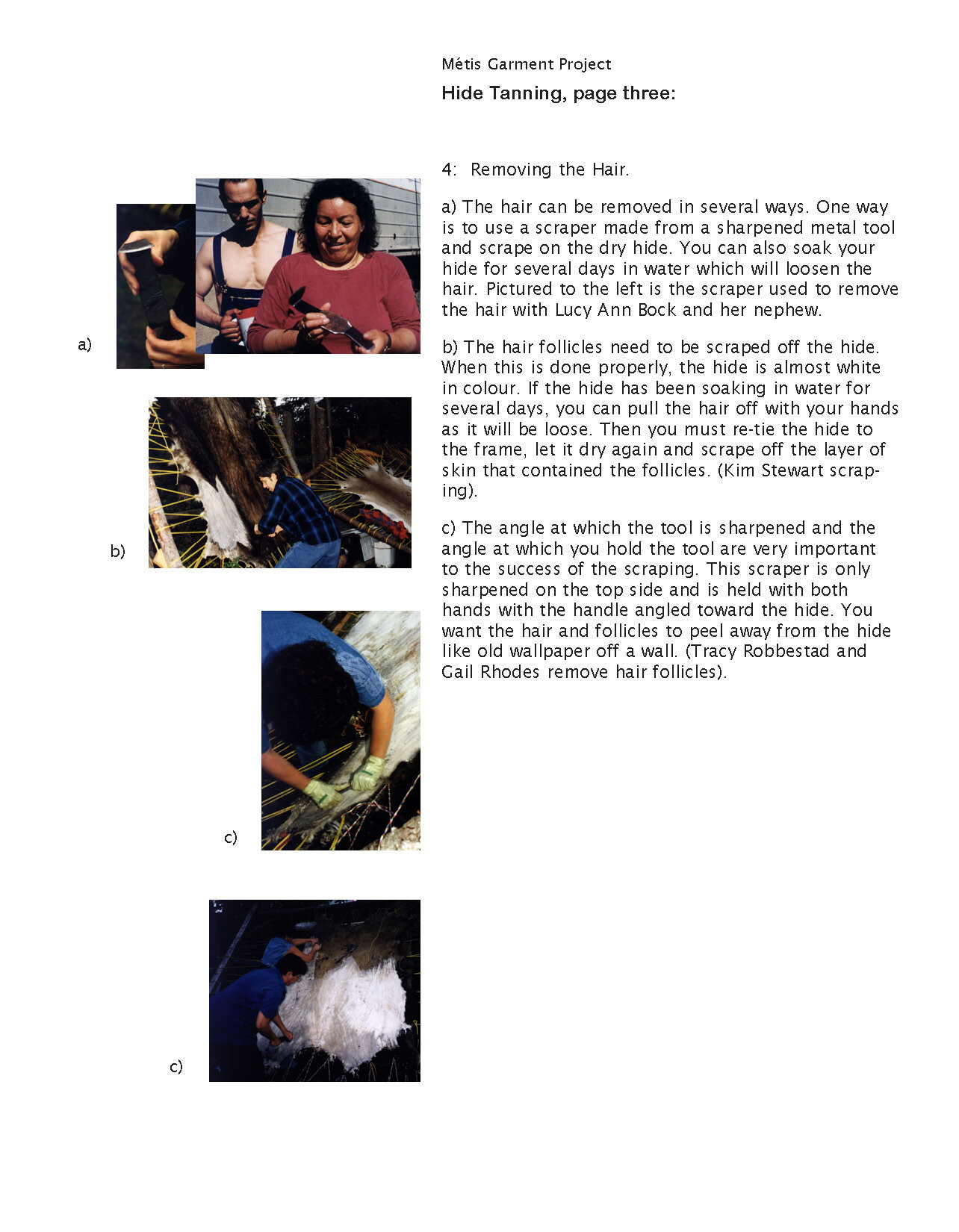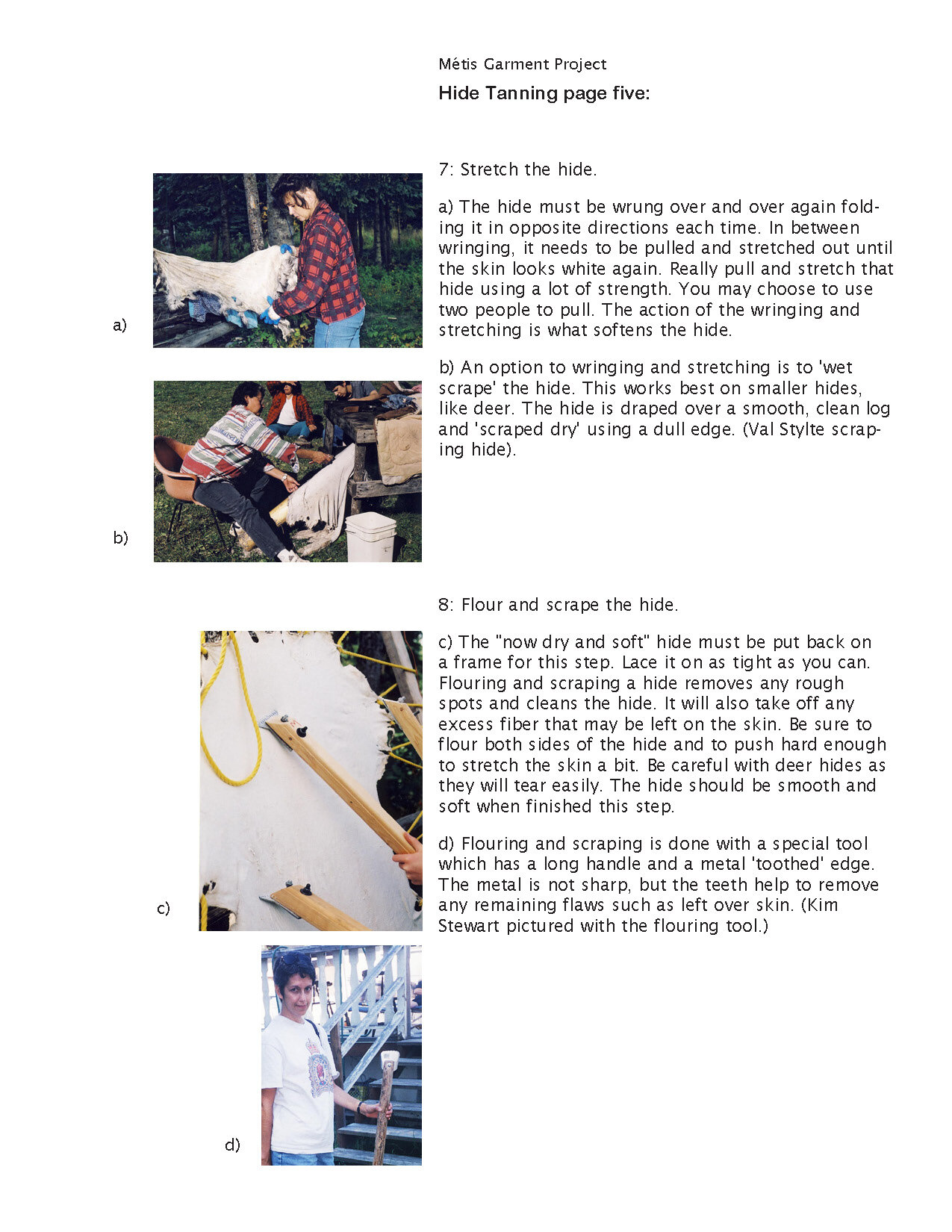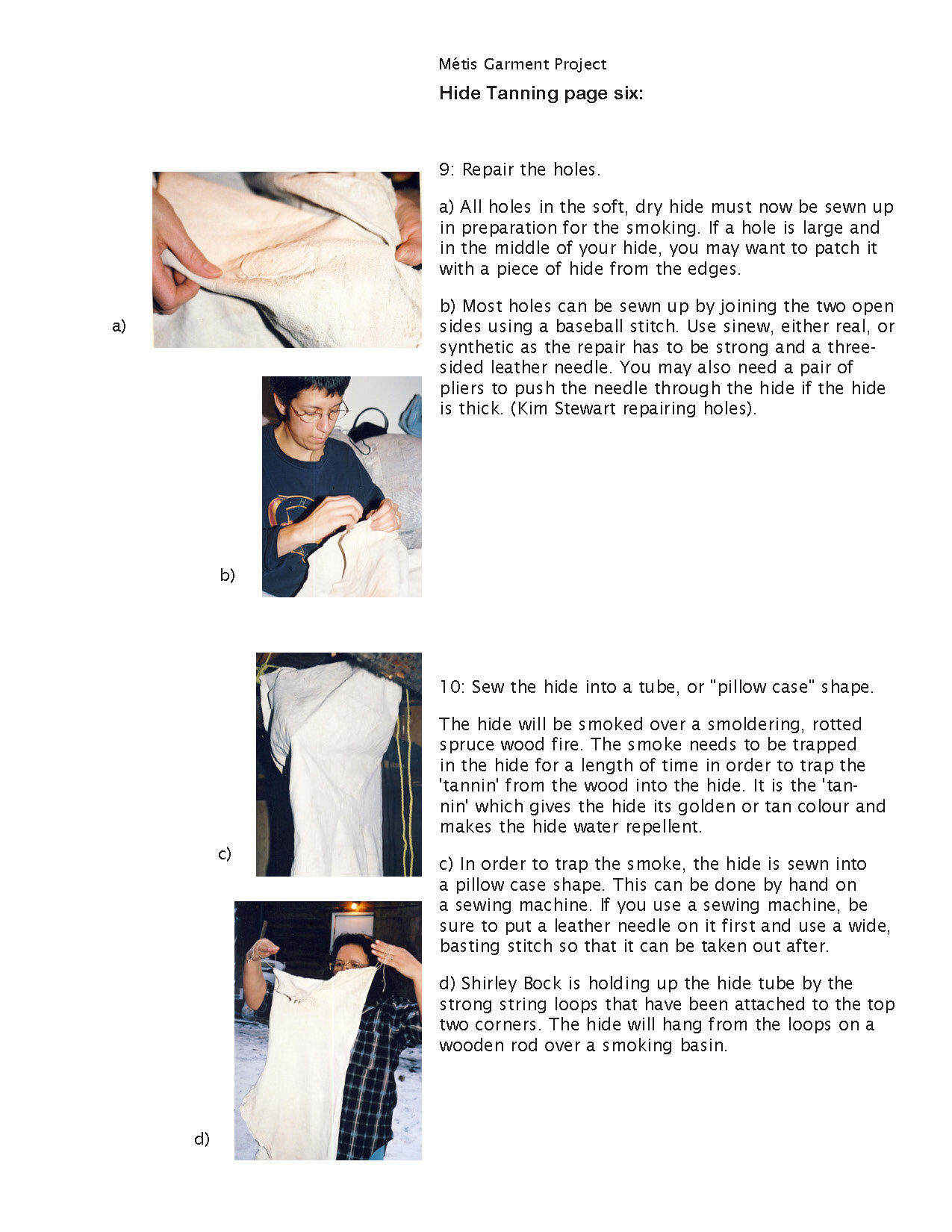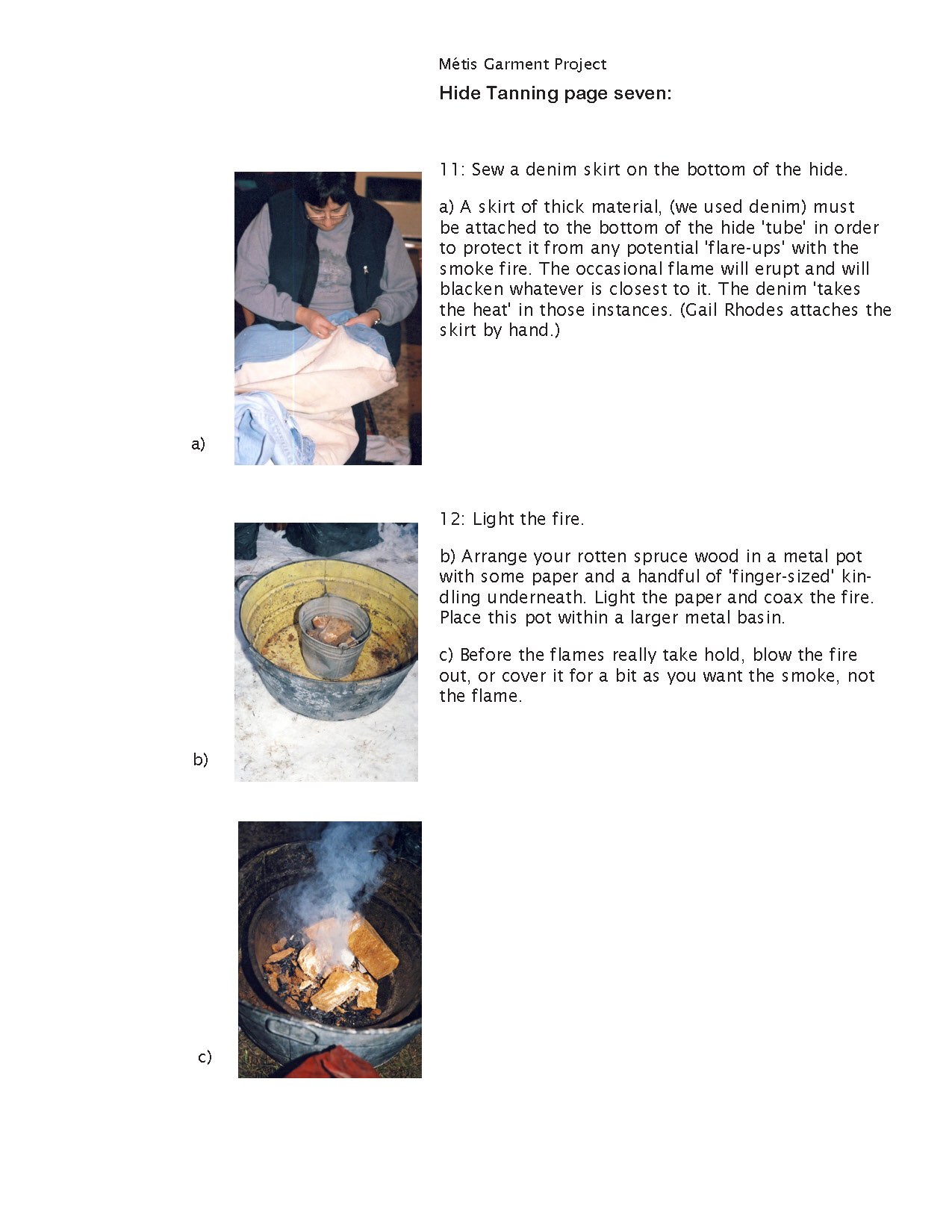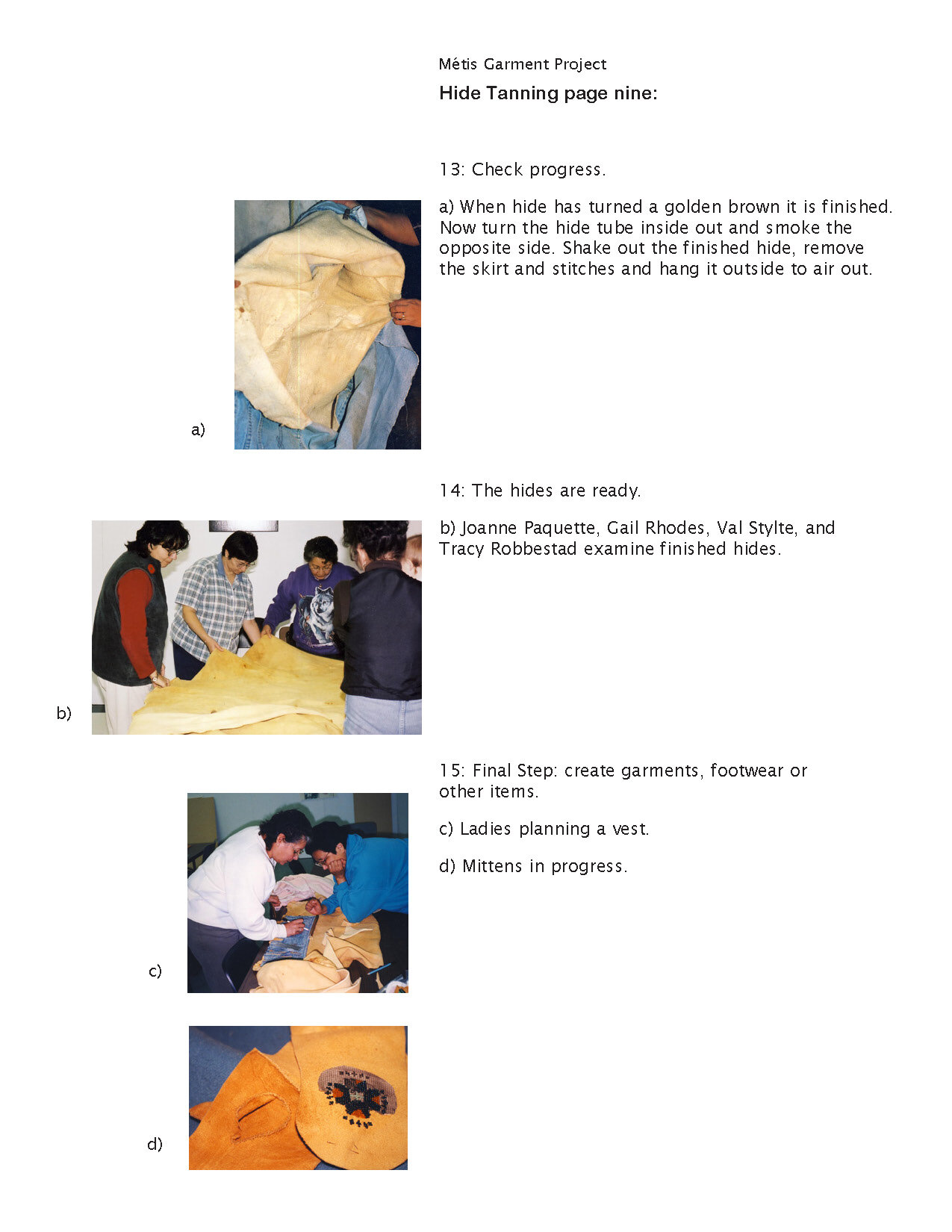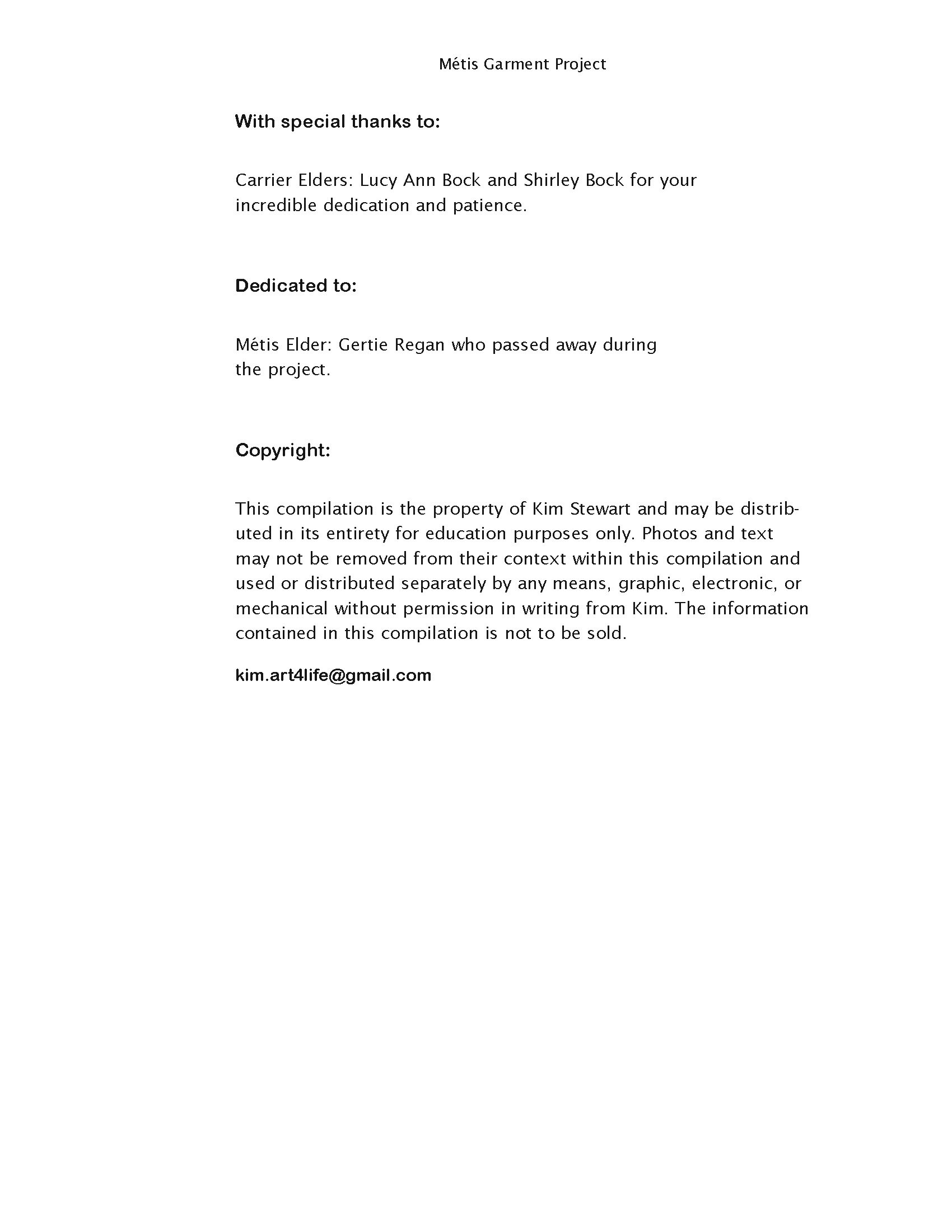Hide Tanning - a research project from 1998-2000
I would like to post this research here so I can share with others. This was my first experience learning about traditional hide tanning (with a few modern methods thrown in). Please respect my intellectual property rights and the indigenous Traditional Knowledge rights of the Elders by asking permission to share and attributing any shared information appropriately to Kim Gullion Stewart at kim.art4life@gmail.com.
This = That
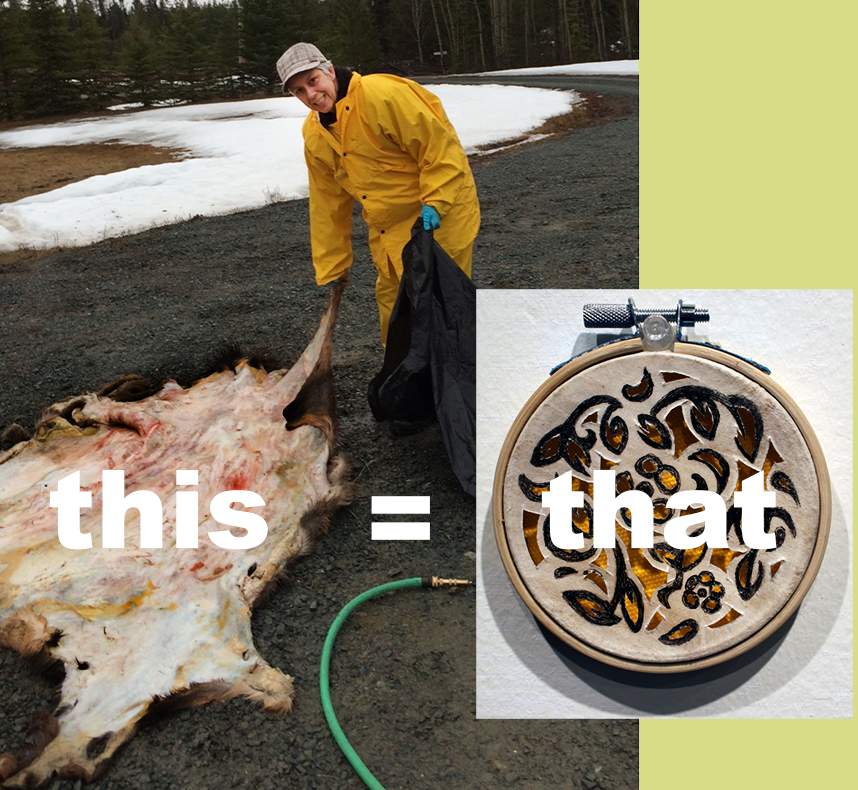 I spent the morning getting very wet. I am working with an Elk hide to clean and use it for my art practice. I learned how to tan hides the Native way in 2000 and I continue to practice it. There are many people out there who hunt for meat and some of them bring me the hides for my own use. Many of the parts on a wild ungulate are useful; parts that when made into tools, rawhide or leather will last for generations. When these objects finally wear out they will return to the earth to nourish it in a complete circle of life. So if these old practices are good for the earth, why don't we do them anymore? Are we afraid to get our hands dirty? It is definitely easier to just buy the finished product - but I think purchasing it rather than making it prevents us from:
I spent the morning getting very wet. I am working with an Elk hide to clean and use it for my art practice. I learned how to tan hides the Native way in 2000 and I continue to practice it. There are many people out there who hunt for meat and some of them bring me the hides for my own use. Many of the parts on a wild ungulate are useful; parts that when made into tools, rawhide or leather will last for generations. When these objects finally wear out they will return to the earth to nourish it in a complete circle of life. So if these old practices are good for the earth, why don't we do them anymore? Are we afraid to get our hands dirty? It is definitely easier to just buy the finished product - but I think purchasing it rather than making it prevents us from:
1) appreciating the labour that goes into making an object 2) realizing the consequences of our purchase on the earth 3) treating the object responsibly, ie: repairing it when it is broken rather than just buying another one.
I believe when we are removed from the labour of making an object, we are not aware of its true cost as retail cost is only represented in dollar signs and numbers and not in the process of making. Forgotten are the physical pain, process and sacrifice required for us to 'have' that object. We also don't associate the finished product with its origin. Some things should not be made from the materials that they are, materials and processes that hurt our environment and our people. Finding our way back to living with a smaller footprint will take practice and sacrifice, but it will be well worth it.
Take an object in your house and collage a 'this = that' photo. I guarantee it will be interesting.
Today and Tomorrow
Tomorrow is my last day in residency. It seemed to move so quickly and yet I miss my family. I feel that I have experienced each day to the fullest here at the Banff Centre. I attended music performances, artist talks, networked, and created. Below is today's work - devising a way for the pages of my 'testament' to link together. Tomorrow I will say goodbye to this space only as I bring my work home.
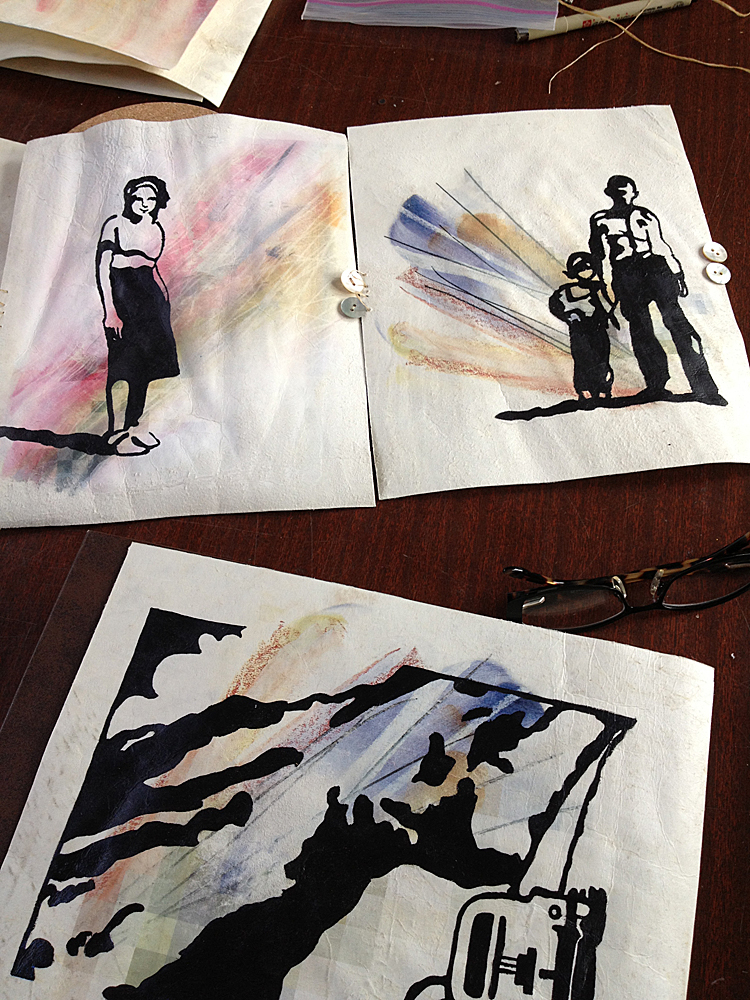
My Dreams, Your Dreams...a reality.
I came across a post on a blog called Mira's List called "Finding Money for your Dreams" and I was immediately drawn in. This article is about asking for money in the form of Grants for creative writing or artistic work. Mira lets the reader in on her own story, then launches into grant myth-breaking. She says that although you don't have to be famous or know someone, you do have to have talent. Mediocracy doesn't cut it. So how do you know if you are any good at what you do? As a "slush pile" worker for a granting agency, Mira tells us that applications that credit Grandma as their biggest fan, or state that the jury will like their art because "everyone does" go directly in the 'no' pile. So who's opinion counts? Your peers, the curator of the local public gallery, people who buy your art, juries for group art shows, art instructors to name a few. The point is to get your work out there. Don't hide it under your couch like my grandmother did. She was an accomplished hand potter who dug her own clay from the banks of the river, taught community classes in pottery and hid her best work under her furniture. She didn't believe that her work was valid. As creative people, our work is always valid. It is a way of communicating opinions, thoughts, ideas, and observations. It can be a record of cultural influences, personal history, struggles, joys and sorrows. Those of us who are compelled to create have an important place in society and those who offer grants believe in what we do. They 'want' to see us succeed. If you are a creative person, do yourself a favour, go to Mira's list and read her post, then 'ask' for what you need in the form of a grant. I know I will!
hunting for credentials
I will feel more comfortable holding my instructor's position at the college once I have earned a Masters degree. I have been thinking about this for a while. Recently there was an ad in the Newspaper that caught the attention of one of my students and she sent the information to me. As a result I'm applying as a student to the Simon Fraser University MEd in Art Education program. It's a community Master's program which will take place in Prince George from September 2009 until Summer 2011. Classes run on the weekends and over the summer which will allow me to continue working at the college. I have been looking for a graduate program that will fit into my budget and family lifestyle. Not only does program do that, it happens to be in an area of keen interest for me. I'm especially interested in Art-Practice as a form of research, studio-based inquiry and connecting the 'Art as Social Practice' movement to traditional aboriginal art. So I am sending thanks out to the student whose name is withheld to protect her identity...(but you know who you are!) as she has applied also. We should know by the end of April if we have been accepted. Until then, I hold my breath.
Creative 'Practice'
Emphasis on practice because that's what I do. Every thought comment, painting or drawing is a form of practice. The beauty of a creative practice is that it lasts a lifetime. This blog is a peek into that process.
If you appreciate what I do…
Buy me a Coffee!
I see my 'visual' blog go to Instagram: kim.art4life
Categories
- Hide Tanning (1)
- Recent Artwork (1)
- Traditional Indigenous (1)
- art as a career (1)
- friends (1)
- saved (1)
- building my website---... (2)
- Extreme ironing (3)
- Travels (3)
- pain (3)
- faith and spirituality (4)
- metis art (4)
- Artists (5)
- Learning (5)
- country living (6)
- My Art Online (7)
- remember when--- (10)
- Uncategorized (13)
- work (16)
- teaching (19)
- artists worth noting (20)
- creative motivation (29)
- my art (48)
- home life (78)
- my opinions (84)
